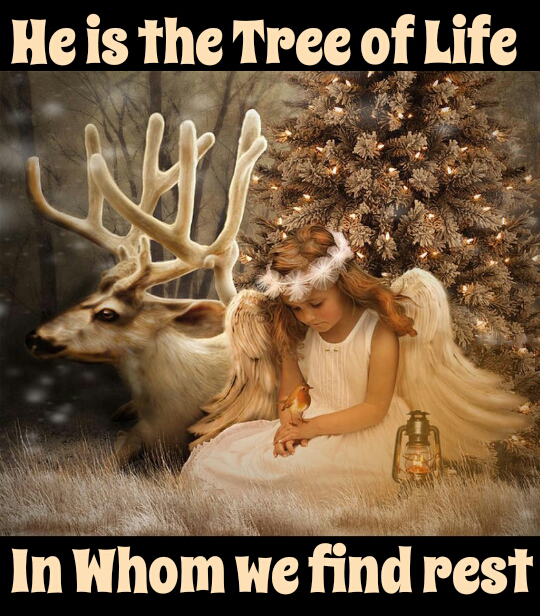SHOULD CHRISTIANS CELEBRATE CHRISTMAS/DECORATE TREES?
🎄 How does anyone change a decoration from pagan-hood
to Christianity? It is not the tree’s fault, Just as the drum
that is played in occult worship is also played in worshipping
the One True God!
The use of inanimate objects can be changed to represent
God’s ways. In other words redeemed. Just as Jesus dying
on an occult symbol ( the cross) can be turned to be a
reminder of what Jesus did for us. Remember that God
judges our heart motives. Do we worship a christmas tree
like an idol ? No. 🎄
There’s been alot of condemnation online for using christmas trees using a scripture in Jeremiah to justify it, which scripture is about carving idols. This article discusses that.
I thought it was interesting that the presidents wife who is from Eastern Europe where they have a tradition of flocking their Christmas trees red to represent the blood of Jesus, used such in decorating the Whitehouse.
🌹🌹🌹🌹🌹
This one is good - going back to earlier traditions and some fables
🌹🌹🌹🌹🌹
Another take from linked article:
In the early days of Christianity, the birth of Jesus was set at the last day of Saturnalia by the first Christian Romans in power to approach pagans, even though scholars assert Jesus was born nine months later. It was a clever political ploy, some say, which in time transformed Saturnalia from a frat party marathon into a meek celebration of the birth of Christ
While a lot of ancient cultures used evergreens around Christmas time, historical records suggest that the Christmas tree tradition was started in the 16th century by Germans who decorated fir trees inside their homes. In some Christian cults, Adam and Eve were considered saints, and people celebrated them during Christmas Eve.
Some say the first to light a candle atop a Christmas tree was Martin Luther. Legend has it, late one evening around Christmas time, Luther was walking home through the woods when he was struck by the innocent beauty of starlight shining through fir trees. Wanting to share this experience with his family, Martin Luther cut down a fir tree and took it home. He placed a small candle on the branches to symbolize the Christmas sky.
What’s certain is that by 1605, Christmas trees were a thing as, in that year, historical records suggest the inhabitants of Strasburg ‘set up fir trees in the parlours … and hang thereon roses cut out of many-coloured paper, apples, wafers, gold-foil, sweets, etc.’
During these early days of the Christmas tree, many statesmen and members of the clergy condemned their use as a celebration of Christ. Lutheran minister Johann von Dannhauer, for instance, complained that the symbol distracted people from the true evergreen tree, Jesus Christ. The English Puritans condemned a number of customs associated with Christmas, such as the use of the Yule log, holly and mistletoe. Oliver Cromwell, the influential 17th-century British politician, preached against the “the heathen traditions” of Christmas carols, decorated trees, and any joyful expression that desecrated “that sacred event.”
It wasn’t until the time of Queen Victoria that celebrating Christmas by bearing gifts around a fir tree became a worldwide custom. In 1846, Queen Victoria and her German husband Albert were sketched in the Illustrated London News standing with their children around a Christmas tree at Windsor Castle. German immigrants had brought the custom of Christmas trees to Britain with them in the early 1800s but the practice didn’t catch on with the locals. After Queen Victoria, an extremely popular monarch, started celebrating Christmas with fir trees and presents hung on the branches as a favor to her husband, the layfolk immediately followed suit.
Across the ocean, in the 19th century, Christmas trees weren’t at all popular, though Dutch and German settlers introduced them. Americans were less susceptible to the Queen’s influence. However, it was American civic leaders, artists, and authors who played on the image of a happy middle-class family exchanging gifts around a tree in an effort to replace Christmas customs that were seen as decadent, like wassailing. This family-centered image was further amplified by a very popular poem written by Clement Moore in 1822 known as the “Twas the Night Before Christmas”. The same poem conjured the modern picture of Santa Claus.
It took a long time before the Christmas tree became an integral part of American life during this faithful night. President Franklin Pierce (1804-1869) arranged to have the first Christmas tree in the White House, during the mid-1850s. President Calvin Coolidge (1885-1933) started the National Christmas Tree Lighting Ceremony on the White House lawn in 1923.
Though traditionally not all Christian cultures adorned their homes with evergreens and presents, the influence exerted by the West and rising consumerism has turned the Christmas tree into a ubiquitous symbol. In fact, many people of other faiths have adopted the Christmas tree (See Japan for instance).
The Christmas tree has gone a long way from its humble, pagan origins, to the point that it’s become too popular for its own good. In the U.S. alone, 35 million Christmas trees are sold annually, joined by 10 million artificial trees, which are surprisingly worse from an environmental perspective. Annually, 300 million Christmas trees are grown in farms around the world to sustain a two-billion-dollar industry, but because these are often not enough, many firs are cut down from forests. This is why we recommend opting for more creative and sustainable alternatives to Christmas trees.
Love Pris
